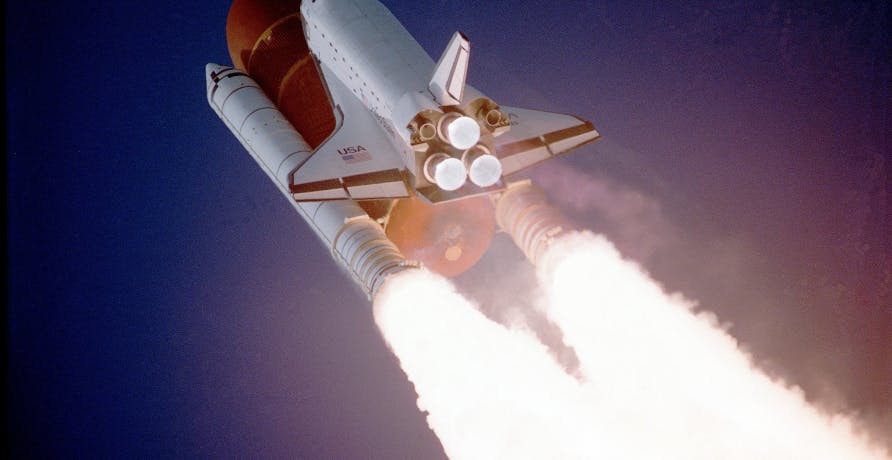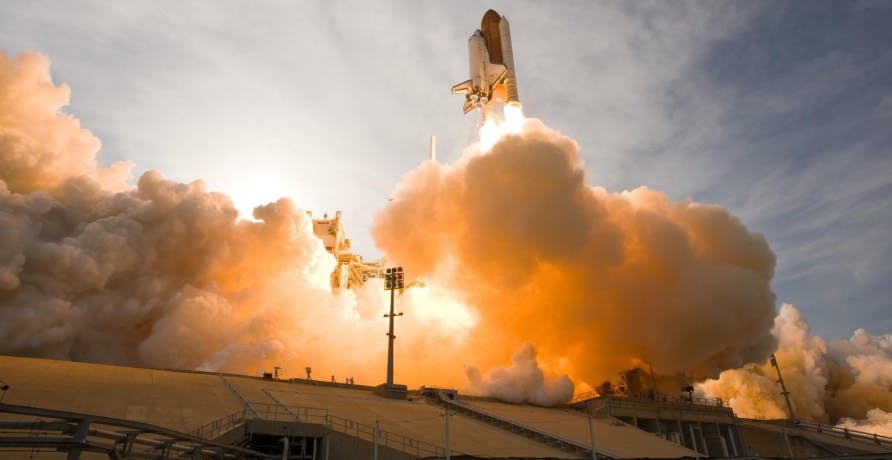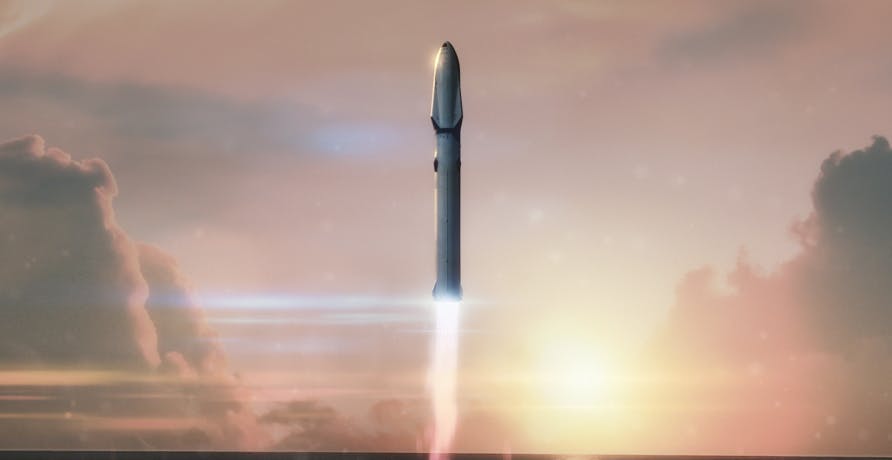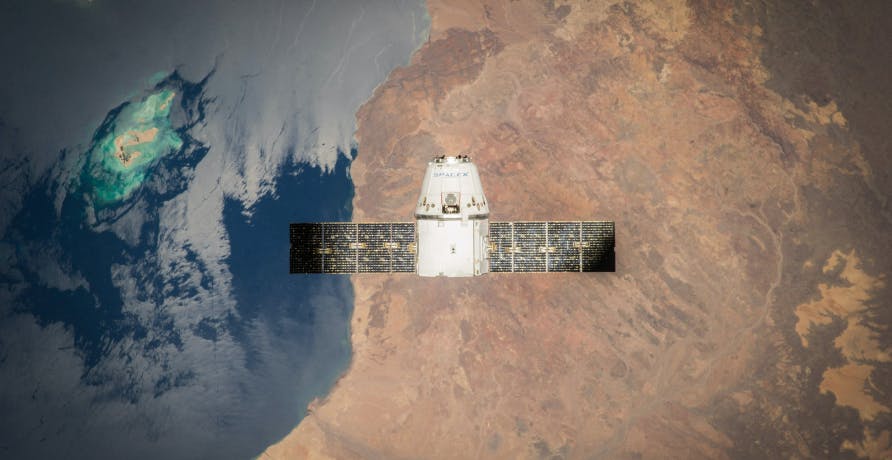ESG / CSR
Industries
Could a Rocket Launch Really Become 'Green' and Sustainable?



The journey to discover what lies beyond planet Earth is a constant effort, and while we as a human species have continued to develop new technologies to allow further exploration – there are components and consequences of space exploration such as space junk and rocket launches that can deter countries around the world from meeting their emissions targets.
How could rocket launches be developed to become more sustainable, and is it even possible to successfully launch a ‘green’ rocket?
What are rocket launches?
There are several things that have become the new norm in today’s society that people in around the world wouldn’t bat an eyelash for: such as the use of smartphones, the use of cryptocurrency as a viable way to pay for things, and rocket launches used to send machinery up to outer space for more accurate and extensive space exploration.
Rocket launches are when various programs, such as NASA, send a spacecraft beyond the stratosphere of the Earth to discover the planet. Rocket exploration programs work in three or four phases, the launch phase, the cruise phase, the encounter phase, and sometimes the extended operations phase if the space program or individual rocket launch is well funded.
When a rocket launch occurs, the spacecraft is sent into the sky to surpass the atmosphere. Once the spacecraft has entered outer space and is no longer confined to gravity on Earth, it can then proceed with its mission in outer space. However, sometimes these rocket launches are unsuccessful – with the rockets dismantling themselves and contributing to space junk.
Despite the success of rocket launches, both cases, whether the rocket makes it into outer space or dismantles – rocket launches create a colossal carbon footprint that many are still trying to develop new ways to mitigate.

Are rocket launches bad for the environment?
In fact, research has shown that the more rocket launches that are to occur – the more that the Earth’s atmosphere and ozone layer will be warmed and depleted. This is due to the fact that rocket launches contribute to black carbon, which is more commonly recognized as the dark, soot-like substance that vehicles with gas engines, such as cars, leave behind. Anything that uses fossil fuels might create black carbon. Scientifically, black carbon is composed of several different forms of pure carbon, and heavily contributes to air pollution. This remains one of the largest environmental concerns with rocket launches, as rocket launches are subject to creating extensive amounts of black carbon which pollute the Earth.
When rocket launches occur, they emit black carbon into the stratosphere – and given rocket launches occur well above ground, these toxic particles have a better chance at harming the stratosphere than the black carbon produced from a car still on the ground. Even worse, rocket launches may emit black carbon even higher than the aircraft may go – meaning, even if the rocket launch is ultimately a failure, these polluting substances will still be released into the air. In addition to this already catastrophic environmental effect of rocket launches, black carbon doesn’t dissipate with ease – as the residue and toxic particles from black carbon can remain present in the stratosphere for up to four years. This is bad for both the planet and space exploration, given it contributes to pollution and can prevent successful space exploration due to lack of visibility.
The environmental impact of black carbon in conjunction with consistent rocket launches isn’t positive news for those enduring the fight against climate change. In fact, if rocket launches continue to occur at the current rate that they are – it could provoke the temperature of the stratosphere to rise almost three degrees Fahrenheit while still thinning the ozone layer.
👉 If rocket launches continue to emit the amount of black carbon that they are, it could further deteriorate the ozone layer – and compromise the protection needed by all living organisms on the planet to be protected from ultraviolet sunlight rays.
Maybe it’s unrealistic to presume that rocket launches could become emission-free, but it doesn’t mean that measures can’t be taken to allow for ‘greener’ or more sustainable rocket launches.

How could rocket launches be developed to be more sustainable?
Rocket launches, like many Earthly activities, are always going to be prone to some amount of excessive emissions. However, that doesn’t mean that they aren’t measures that could be taken to reduce the current environmental impact had by rocket launches. For instance, one of the many things that space programs proceeding with rocket launches could do to make rocket launches more sustainable is seek to use photovoltaics, otherwise known as the energy taken from solar panels. Photovoltaic energy can create the same amount of power needed to fuel rocket launches, and while it cannot deter the other emissions currently being created by rocket launches – it’s a surefire step in the right direction.
Another solution to develop more sustainable rocket launches is to create kerosene-burning rockets, as kerosene is a more affordable, stable, and less hazardous type of fuel that could mitigate the harmful environmental effects that typical rocket fuel is subject to create. However, the problem with using kerosene rocket fuel for rocket launches is that when used with other hydrocarbon propellants – it could still result in the same amount of black carbon. Therefore, mitigating the environmental impact of rocket fuel is still a work in progress.
If scientists could develop ways to alter the engine types used by space rockets, it could change the course of the environmental impact created by rocket launches. However, it isn’t just up to those in the space industry to deter their impact on the environment, but it’s also up to those still making laws on the ground to prevent the space industry from creating an extensive carbon footprint in the first place. For instance, the Montreal Protocol has helped to prevent the use of CFCs in rocket launches that would have otherwise been continued to be used by the space industry. Therefore, environmental legislation can help propel the space industry to conduct the research necessary to further develop more sustainable rocket launches and space exploration.
In the same way that there is no single component of the transportation industry responsible for excessive emissions, rocket launches are not the sole problem or root cause of emissions created by the space industry.

How else is outer space exploration bad for the environment?
It’s true that outer space exploration and rocket launches only account for a fraction of the emissions created by commercial air travel, but it doesn’t mean the impact is null.
In fact, rocket launches aren’t the only component of space exploration guilty towards emitting excessive emissions or deterring from the successful exploration of space. Space junk, also known as space debris, is when space exploration technologies such as rockets, satellites, and rovers fail to return to Earth and are left behind in space after or even before a space exploration assignment has been completed. When space junk is left behind, they can emit toxic particles that return back to the Earth’s atmosphere as well as compromise future space exploration as space junk can block the visibility of other planets, stars, or areas of space trying to be explored. To make matters worse, if space junk or is to collide with active satellites or a meteor heading towards Earth – the amount of toxic particles to be emitted could increase and ultimately harm the planet and space exploration even more.

Are rocket launches ultimately worth the environmental impact they create?
The environmental impact of rocket launches, just like anything else, is relative – given the fact that the statistics for the emissions created by rocket launches would appear miniscule if presented side-by-side with the emission created by the aviation industry. To many, the environmental impact of the space industry and rocket launches may seem trite given it isn’t a daily practice amongst the majority of people living on Earth contributing in the way that typical commuting or food choices do. In light of this point of view, it is viable to presume that many may seem space exploration as a deterrent from achieving progress in the fight against climate change, as a whopping $103 billion dollars was allocated to space exploration in the U.S. in 2022 – which could help to fund thousands of carbon capture and storage systems for businesses looking to reduce emissions.
However, the goal of becoming sustainable isn’t to avoid an activity altogether – but to make it greener wherever possible. Rocket launches can become more sustainable, and even if they can’t avoid an environmental impact all together – it’s still progress. Maybe it isn’t possible for rocket launches and other endeavors in the space industry to become fully ‘green’ or sustainable – but it’s imperative to remain mindful of how they can continue to compromise the progress in the fight against climate change those of us still on the ground are working towards.
What about Greenly?
If reading this article about possible rocket launches becoming green or sustainable has made you interested in reducing your carbon emissions to further fight against climate change – Greenly can help you!
Rocket launches, even if they are to become green or sustainable, aren’t the only surprising thing that could provoke environmental damage. Many of those can be difficult to discover, and Greenly’s got you covered – click here to book a demo and learn more about how we can help you to measure and reduce your various scope emissions.
Greenly can help you make an environmental change for the better, starting with a carbon footprint assessment to know how much carbon emissions your company produces.


